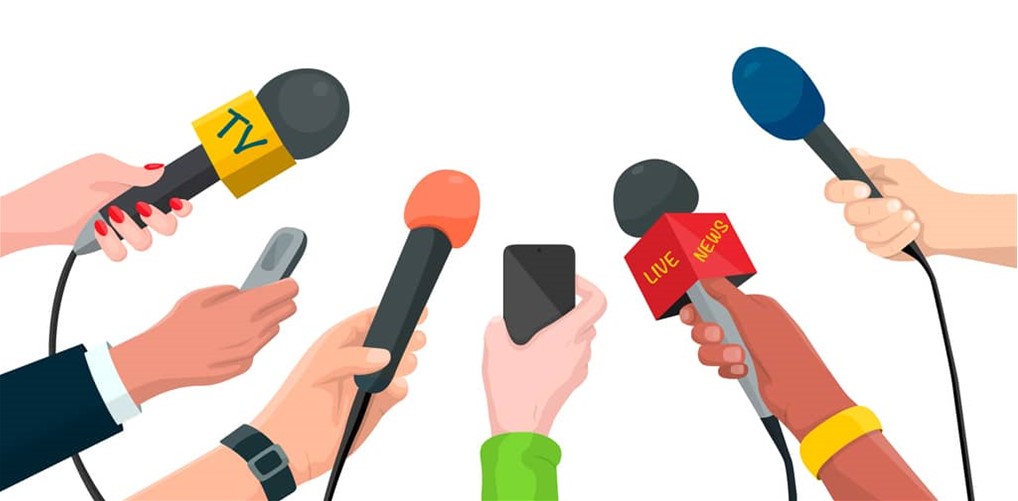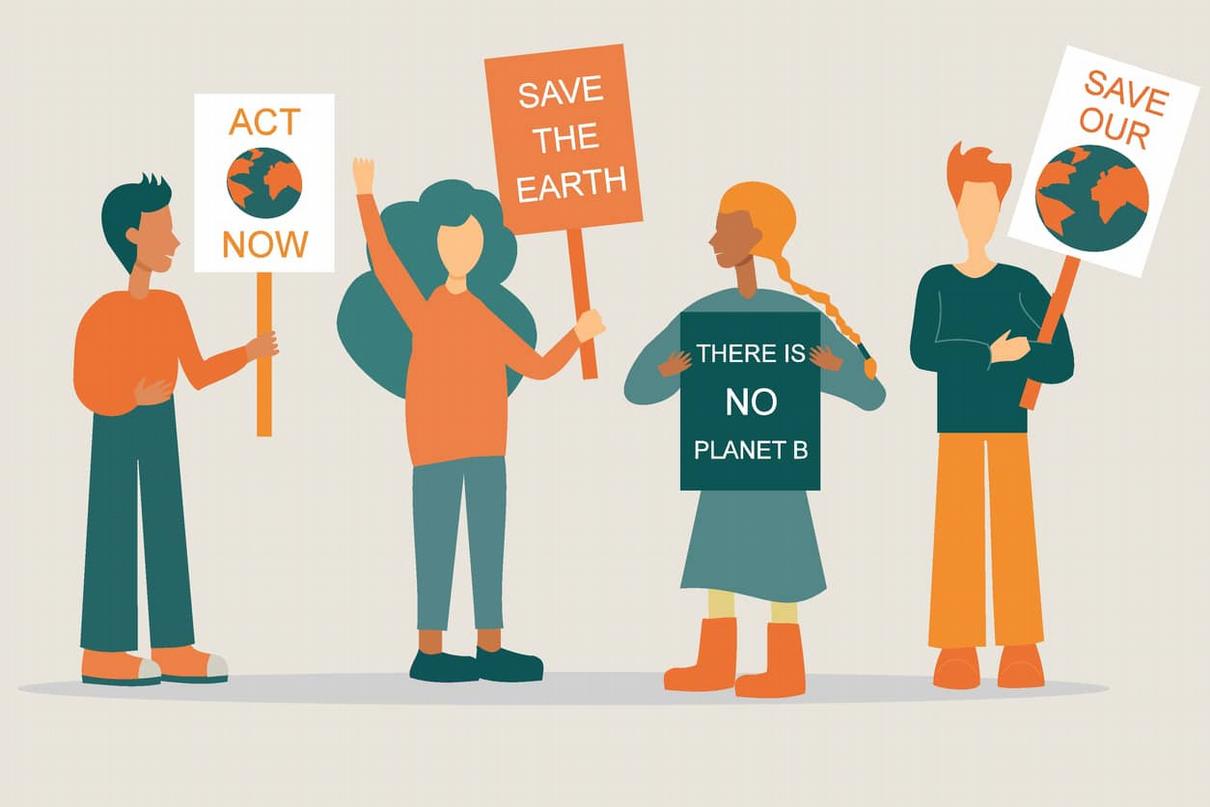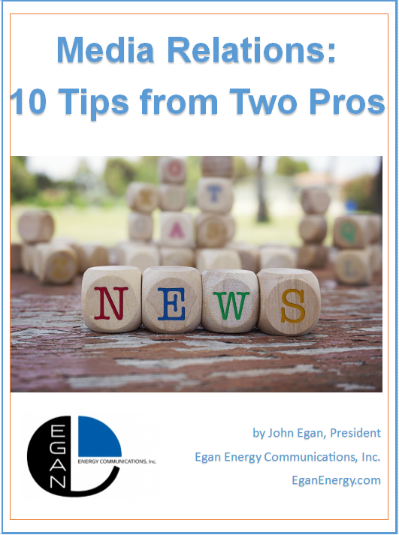
If you’ve never worked in the news media, or in a utility media relations department, it may be hard to understand why some stories are covered and others are not. Utility leaders may think favorable news media coverage is nice but not necessary. In reality, it is indispensable, particularly as providers of electricity, natural gas, and water go through their respective strategic transitions. If you want the public to support your plans, or at least not oppose them, the public needs to know who you are and what you stand for.
Skillful Media Relations Practices Can Offset Protests Against Capital Projects
North American providers of electricity, gas, and water plan to begin construction of hundreds of billions of dollars of capital projects over the next five years. That covers everything from renewable energy to nuclear power, liquefied natural gas terminals, electric transmission projects, gas pipelines, water delivery projects, wastewater treatment plants, and electric distribution system upgrades. Any of those projects can be stopped dead in their tracks by a small band of determined opponents.

Providers of electricity, natural gas, and water have no shortage of newsworthy stories. The question is, which will be covered by their news media? Sometimes that’s decided by unique or unusual features — like the utility employee who donates a kidney to save the life of a child with late-stage renal disease. But more often, media coverage comes down to basic blocking and tackling, AKA “Media Relations 101” practices, including:
- Answering messages left by the news media
- Making it easy for reporters to find you
- Having a good story to tell, and
- Telling it well
Media Relations 101: Answer Messages Left by News Reporters
We covered the first step in our January blog, The First Step to Getting Better Media Coverage. You may not think that people who are paid to interact with members of the news media have a problem picking up a phone, replying to an email, or replying to a text from a reporter, but believe me, some of them do!
How do I know this? Our January blog stemmed from a series of journalistic assignments I wrote for EnergyTech, a new business customer energy portal. Those articles focused on what businesses and educational institutions were doing to decarbonize their energy. To report those stories, I interacted with a set of media relations practitioners at healthcare facilities, manufacturers, schools, trade associations and financial firms. Some of those interactions went swimmingly, but some were truly dreadful, causing many delays in getting my articles written A lot of that had to do with whether spokespeople returned messages, emails, and texts I left them.
Those assignments gave me a fresh perspective to think about utility media relations practices. Ever hear the phrase, “all that’s old is new again”? It’s true — as the media continues to morph, some of the eternal verities remain.
Then I was invited to speak on the topic of utility media relations at a conference held by Western Energy Institute. That was the perfect opportunity to discuss the importance of basic Media Relations practices. I reviewed the news pages of WEI members, roughly 80 providers of electricity and natural gas, and out of that came my findings.
Below I riff on another critical element of a top-quality media relations practice that I shared with the WEI attendees.
Media Relations 102: Make It Easy to Find You
The goal here is to make it fast and easy for a reporter to locate a utility spokesperson, in effect, idiot-proofing your news page of your utility’s website.
The implied standard I used for this was, how many mouse clicks would it take to locate the investor relations representatives at shareholder-owned utilities? If you’ve never benchmarked your media relations practices, this would be an insightful exercise!
In most cases, it took me no more than two or three mouse clicks to locate the specific names, email addresses, and direct phone numbers (often including cellphone numbers, which meant I could text) for those who talk to the financial community. In my research for the WEI talk, I found that few utilities make it that easy to find their media relations representatives.
Communications Tip: Some best practices in media relations never go away, like media reps promptly answering and responding to calls, texts or emails and including their contact info where it can be found easily on their website.
Generally speaking, here’s the qualitative criteria I used in researching my WEI talk to decide how easy I could locate a utility media relations representative:
Best Practice: List specific spokesperson name, phone number, and email address on the “News” landing page and on press releases.
Pretty Good Practice: Provide a specific spokesperson’s name, phone number, and email on either the “News” landing page or press releases.
Not Very Good Practice: Include a blinded name, a toll-free phone number, and blinded email address, either on news landing page or on news releases.
Truly Awful Practice: Not include at all a spokesperson’s name, number, or email address anywhere on the company’s website!

In general, the media relations practices of the 80-some members of the WEI whose websites I reviewed were distributed along a bell-shaped curve, with roughly 10% falling into the “Best Practice” or “Awful Practice” categories and the remaining 80% split more or less evenly between “Pretty Good” and “Not Very Good” practices.
Illustration Credits: iStock
Coming Soon – Media Relations 201 and 202: Other Critical Ingredients to Getting More Favorable Media Coverage
———————————————————————————————————
Media Relations: 10 Tips from Two Pros

The utility media relations function can help turn stakeholders into advocates, producing a wide range of benefits: lessened frictions, lowered costs, enhanced customer relations, increased customer satisfaction and improved brand equity.
But when utility spokespersons have a tin ear or a heavy hand, they can create problems internally and externally: for executives, for customer service representatives, for legislative and regulatory affairs managers and for departments seeking to build infrastructure.
Read more here.
Additional EEC Resources on Media Relations
How to Write a Press Release: Tips from Both Sides of the Laptop
The Care and Feeding of the News Media

